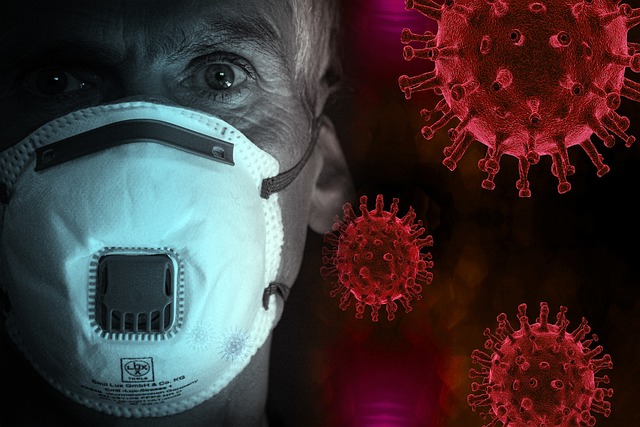Background:
The emergence of the highly transmissible COVID-19 variant, Omicron, has resulted in a large number of advanced infections, including among healthcare workers (HCWs). Recent CDC recommendations now allow healthcare workers to return to work after day 5 if symptoms have improved, without the requirement for a negative rapid antigen test (RAT).
Methods:
Fully vaccinated, non-immunocompromised healthcare workers at a large urban academic medical center who tested positive for COVID-19 beginning in late December 2021 (when Omicron was the predominant strain in circulation) were allowed to return to work early if all symptoms had resolved except for a mild, intermittent cough and/or persistent loss of taste/smell, provided a rapid antigen test was negative upon return.
Those with negative tests were allowed to return to work with stipulations that they wear an N95 at all times and take breaks and eat meals separately from others.
Those who test positive on the first attempt could return 24-48 hours later to retest for as many days as necessary to achieve a negative result or until completing 10 days of work restriction.
Results:
Between January 2, 2022 and January 12, 2022, 309 total rapid antigen tests (RATs) were performed on 260 separate HCWs on days 5 to 10 of illness. Overall, 43% (134 of 309) of all RATs were positive between days 5 and 10.
The highest RAT positive percentage was observed among HCWs who returned for their first test on day 6 (58%). The positivity rate was highest (58%) among HCWs who returned for their first test on day 6. HCWs who returned on days 8 and 9 were less likely to have a positive test (26%, 19/74).
In RAT positive healthcare workers who returned for their first test on days 5 or 6 (and for whom line intensity was recorded), 49 % (25/51) were recorded as having the darkest intensity on your RAT.
Healthcare workers who tested positive on their first test most often remained positive on their second test, and 56% of second tests, aggregated over all days 6-10, remained positive.
In all first tests conducted on days 5 to 10, boosted HCWs were almost twice as likely to test positive for RAT: 53% (75 of 141) of boosted HCWs tested positive.

Discussion:
More than 40% of vaccinated HCWs who felt well enough to work still had positive RAT tests when they presented for a first test between days 5 and 10.
People who received the booster were nearly 3 times more likely to test positive on day 5, their first eligible return day, and ~2 times more likely to test positive on the first RAT overall.
The new guidance provides clearance to exit isolation after 5 days from symptom onset, without the need for a negative rapid antigen test to exit, as long as symptoms begin to resolve. According to the CDC, the guidance was prompted by previous studies, mostly collected before Omicron and before most people were vaccinated or infected, that reported symptom onset one or more days after peak loads. of viruses.
In such a case, where isolation based on symptom onset often did not begin until peak virus load had already been reached, then release from isolation at 5 days would be appropriate.
However, reports showing a much earlier onset of symptoms, together with our own results here, demonstrate that the relationship between symptom onset and peak virus load has changed and 5 days from symptom onset it may no longer be an appropriate window to end isolation without a negative rapid antigen test to support safe exit.
Conclusion: These results indicate that a substantial proportion of people with COVID-19 are likely to remain contagious after day 5 of illness, regardless of symptom status. Early release from isolation should be carried out only with the understanding that including individuals on days 6 to 10 of illness in community or work settings may increase the risk of spreading COVID-19 to others, which, In turn, it can undermine the intended benefits for staff resulting in more sick workers. |
















